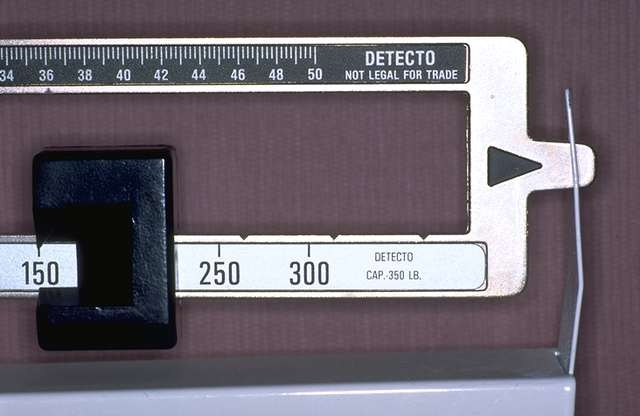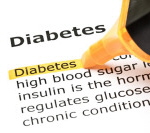
 If you are eating a lot of artificial or prepared low carb foods and snacks, you may be eating more carbohydrates than you think.
If you are eating a lot of artificial or prepared low carb foods and snacks, you may be eating more carbohydrates than you think.
Many products contain carbohydrates that manufacturers claim have a minimal impact on blood sugar, and therefore only promote the “net” carbs instead of the real carb count. Some manufacturers consider “net” carbs as those your body can fully digest and easily use.  In this case, manufacturers deduct all the sugar alcohols and some of the filler products. Their net carb theory is that the carbs your body cannot digest do not count.
That is not necessarily true, and certainly not true for people who have metabolic problems that involve insulin production or insulin resistance, including those with pre-diabetes.
Net Carbs According To Atkins
Dr. Atkins did not invent the low-carb diet, but he certainly made it very popular. The Atkins theory on net carbs is a little more complicated. The Atkins website explains the way they calculate net carbs this way:
In the case of most foods, Net Carbs are calculated by subtracting the number of grams of fiber from the total grams of carbohydrates. This reflects the fact that fiber doesn’t impact blood sugar levels. Moreover, in the case if low-carb products that contain glycerin and other sugar alcohols (also known as polyols), which also have a negligible impact on blood sugar, they too are subtracted from total carbs to yield the Net Carb count.
The glycemic (blood sugar) impact of Atkins bars has also been tested on volunteers, meaning that you can rely on the accuracy of the stated Net Carb count
Let’s use an example of a popular low carb snack that has misleading product information: the Atkins chocolate chip granola bar. The product information lists:
- 17 grams of protein
- 1 gram of sugar
- 200 calories
- 3 grams of net carbs
The ingredient list shows 18 grams total carbohydrates, broken down as follows:
- 6 grams of dietary fiber
- 9 grams of sugar alcohol
- 1 gram of sugar
Note:Â The above only adds up to 16 grams so it is hard to say where the other 2 carbs come from.
Atkins formula for this particular product the becomes:
1 gram of sugar + 2 grams unlisted carbs = 3 net carbs, leaving a balance of 15 grams of carbohydrates they say you can ignore.
If you are following a ketogenic diet (40 grams or fewer per day) not counting any of those 15 carbs could be a very costly diet blunder, kicking you out of ketosis.
Why You Do Have To Count More Than Net Carbs
Fiber
It is important to understand how the body works to know why you may need to factor in more than the net carbs on low carb foods. When you eat, food is converted into glucose; glucose then enters the bloodstream. The pancreas produces insulin to move excess blood glucose from the blood stream into cells and tissues. If you experience a rise in blood glucose levels, your body produces more insulin to normalize your blood glucose (blood sugar) levels.
People who have pre-diabetes may be resistant to the effects of insulin and tend to either over produce insulin to manage glucose loads, or cannot produce enough insulin. Eating carbohydrates always requires the pancreas to respond; how the pancreas responds depends on whether or not it is functionally normally.
In all people who have pre-diabetes (as well as all forms of diabetes except for diabetes inspidus) there is something wrong with how their pancreas produces insulin, how their body responds to insulin, or a combination of both.
Insulin also doubles as a fat-storing hormone. The goal of a low-carb diet is to reduce the amount of insulin your pancreas must produce, which will encourage your body to more efficiently burn fat rather than store fat.
All people with type 1 diabetes must take insulin to live, and so do many people with type 2 diabetes. If someone who was on insulin ate the Atkins Chocolate Granola bar and only took enough insulin to cover those three “net” carbs, their blood sugar would go too high. This is because carbohydrates in soluble fiber can eventually be converted into glucose, it just takes longer — long enough that a non-diabetic person probably would not notice a rise in blood glucose levels, but someone who was dependent on insulin would.
The general guidelines for people with diabetes who take insulin is to count the first five grams of fiber as carbohydrate and take insulin to cover those carbs. Insulin requirements are only reduced for insoluble fiber content over five grams. But even then, there are different types of fiber: soluble and insoluble.
Sugar Alcohols
Some sugar alcohols are not easily metabolized and in large part, pass through the digestive tract without being absorbed. This is why products containing sugar alcohols often carry the warning of a “laxative effect” on the package label. However, sugar alcohols are not all the same. Some have very little impact on blood sugar, while others clearly do affect blood sugar and insulin production.
An example is Malitol syrup, a sugar alcohol commonly found in diet foods has a glycemic index of 53. Examples of similar Low GI Foods (55 or less) include:
- 100% stone-ground whole wheat or pumpernickel bread
- Oatmeal (rolled or steel-cut), oat bran, muesli
- Pasta, converted rice, barley, bulgar
- Sweet potato, corn, yam, lima/butter beans, peas, legumes and lentils
- Most fruits, non-starchy vegetables and carrots
Would you count the carbohydrates in pasta or rice if you ate them? Just because they are low glycemic, you still would not be able to eat much of these foods on a low-carb diet plan. And, if it were only about counting carbs you could eat a teaspoon of sugar on a low carb diet. But this is not the case at all — Atkins calls sugar “the kiss of death” because it kicks your body out of the fat burning state he referred to as “benign dietary ketosis.”
Remember, low-carb plans are about limiting carbs as well as watching the glycemic index. If you are sticking to your plan and not losing weight, start by reducing the number of “net” carb products you eat and replace them with healthier choices like an apple and small slice of cheese.
More Resources And Information
- Carbohydrate Counting: A Practical Meal-Planning Option for People With Diabetes
- Net Carbs: Can You Really Exclude Sugar Alcohols, Glycerin, Polydextrose, and Fiber? By David Mendosa


